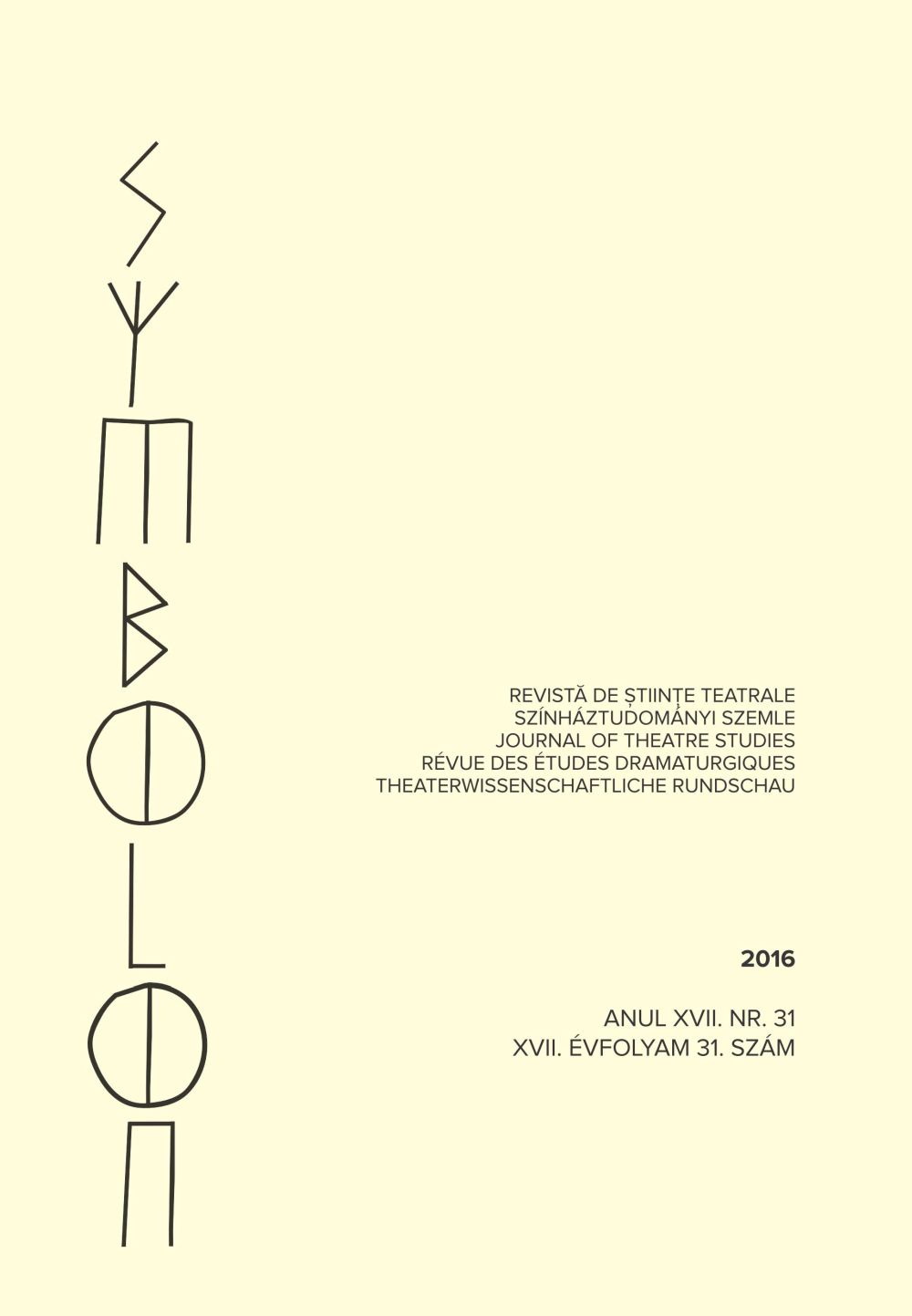Lignes de fuites de l’œuvre dramatique de Samuel Beckett
Vanishing Points in Samuel Beckett’s Dramatic Work
Author(s): Christofi ChristakisSubject(s): Theatre, Dance, Performing Arts, Fine Arts / Performing Arts
Published by: UArtPress - Editura Universității de Arte din Tîrgu Mureş - A Marosvásárhelyi Művészeti Egyetem Kiadója
Keywords: Beckett; theatre; stage; play; vanishing point;
Summary/Abstract: In his dramatic work, Samuel Beckett enhances the physical characteristics of the stage and the stage play. The performance space interferes with the dramatic space, the abstract space of the story acted out on the stage, a story which always begins, and it maintains a special relationship to the characters, thus giving a new dimension between fiction and performance. The tensions caused by the plastic treatment of those spaces seem to be leading to multiple interpretations: choreographic space, geometric, abstract, symbolic and so forth. Equivalently, in Beckett’s drama, dramatic space is related to the outside world and causes a reflection depicting what is easily recognizable as well as that which is difficult to interpret. The tensions accommodated arouse the need to consider it primarily as a play/performance space; as the space for acting, yet they also arouse the necessity to explore its relationship with the characters, the story of the play etc. In this perspective, these spaces are related to the limited stage representation (a spot-lit mouth, for example, appears detached speaking in the darkness in “Not I”). Localization is always an element of the stage. Here and elsewhere (the stage and the world) are reduced to their most profound limit. The stage appears as the place of performance and the development of the fictional story, as well as encompassing the existence and the incarnation of strange characters. This limited stage space inevitably constitutes the bedrock of theatrical action, where different tensions are spread and orchestrated in it. The stage can be explored through the movement of the various elements which have a plastic dimension such as the body, the light, the voice. At the same time, the stage accommodates their tensions. The meaning of these interactions is complex. This performance space is in a perpetual state of modelling that continues to refer to an outside reality which in turn is always brought into the play. This is not a simple interaction between spaces, techniques, theatrical mechanisms; but a set which always brings back to the performance space, the vanishing points of which are in constant interaction.
Journal: SYMBOLON
- Issue Year: XVII/2016
- Issue No: 31
- Page Range: 24-29
- Page Count: 6
- Language: French

